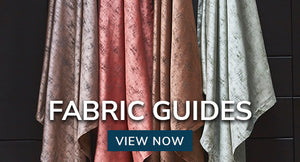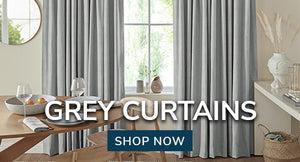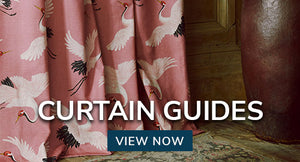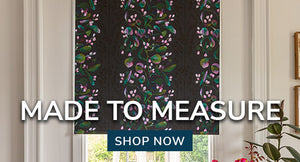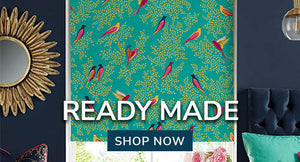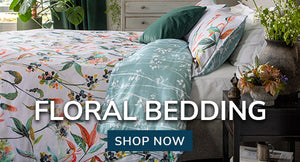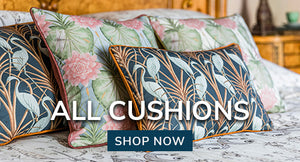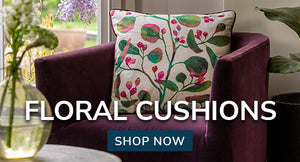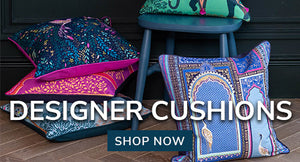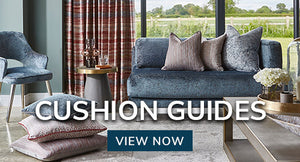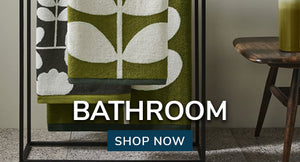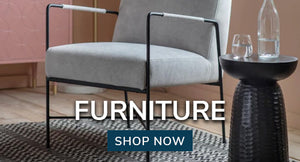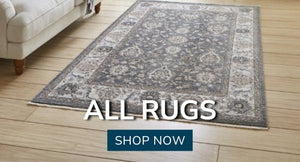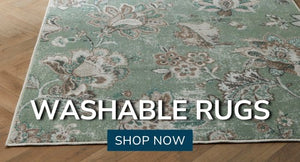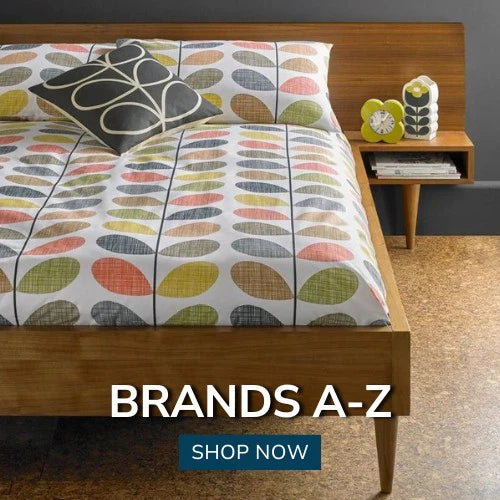Everything you need to know about cushions
The cushion has been around for a very long time and has developed from the original rather hard leather seat cover first used in Manor houses to become one of the must have designer items used by interior designers worldwide.
Choosing your new cushions might seem like a daunting prospect especially when you consider the huge choice available but try to remember that deciding on the décor of your home and then buying the items that you have chosen should be an exciting and pleasurable thing and not a chore.

The secret to making good cushion choices and doing this without too much stress and strain is to take your time and not to be too impulsive. Look at the area that your cushions are to be placed and think about what you want your cushions to do for that area. Are you in need of some bright colours to add a little freshness to your look or do you need some extra comfort or support for your back? Are you simply replacing old or worn cushions with comparable ones or are you trying to change your décor completely?
Once you know what it is you want from your cushions then it is time to consider what type of cushion you need, this means which filling and which cover. The right cushions can add a new dimension to your décor or add the final finishing touches to any room.
To help you make your final decision let’s take a look at the different types of cushions in a bit more detail.
Let's start with the more widely available cushion types, the ones that can be found in most high street shops or online stores. The cushion is simply a bag of filling contained within a cover and can come in a variety of shapes, sizes, styles and colours. Both cushion fillings and covers can be made from many different basic components, some natural and some man-made. If we look at the different cushion fillings that are available we can get an idea of what the different components can give us.
Natural cushion fillings
Firstly you can choose natural fibres for you cushion filling, these include wool, cotton, feather and even derivatives of plant based things like hemp. The type of filling used will have a bearing on the softness and feel of your finished cushion. For instance if you need a soft, cosy cushion for snuggling into then if would make sense to go for a filling like feather or down. Down comes from the smallest feathers on either geese or ducks and is extremely soft to the touch, it is also very warm and is often used in bedding because of these properties.

Because down can be difficult to source it is generally quite expensive and perhaps a better alternative would be the more common cushion and pillow fillings where down and feather are mixed in varying proportions, cheapest options being 80% feather to 20% down although other mixes are available through the price range. Remember that a soft cushion made from these types of fillings will need a good shake or ‘plump’ regularly to ensure that the shape and softness are maintained. Washing and drying feather and down cushion interiors can be quite difficult so bear this in mind if you feel you might need to wash your cushions often. Drying both feather and down is best done in a clothes dryer as this will help to re-plump the filling and keep the softness for longer.
A slightly less soft and more durable filling is probably wool or cotton although both these fibres can be treated to give a soft and springy filling that will give good wear and tear. Treated hemp or sisal gives a hard wearing durable filling. Try to follow manufacturers recommendations when washing these types of cushion fillings.
Man-made fillings
Generally in cushion manufacture costs are kept low by using easily sourced man-made materials and the more commonly used fillings today are foam or latex. These are extensively used in the manufacture of both cushions and upholstery because foam tends to retain its shape well and is very strong and durable. It is also easily cut into virtually any shape or size and this makes it ideal for cushion fillings where various sizes might be needed.
Foam filling is made from a polyurethane mixture that is combined with other elements and left to set in a mold, it can be extremely firm or very soft depending on the mix used. Foam is very versatile and is also often chopped or minced into small pieces to give even more softness and ‘give’ to your cushion. It is easily washable and generally resistant to dust mites making it a good filling for cushions where allergies may be of concern.
Other widely used and fairly inexpensive cushion fillings are hollow fibre and ball fibre, again these are man-made and tend to give a soft feel to your cushion filling. Hollow fibre is soft and springy and looks like cotton wool and ball fibre is small round fibre balls, both are good to use if allergies are a problem and easily washed and dried.
So now we have an idea of the fillings we have to choose from let us take a look at the fabric that our cushion cover may be made from, again the choice is enormous.
Cushion cover choices
Something to bear in mind here again, just as with the filling you choose, is whether or not you or someone in the household might have sensitive skin because some fabrics can aggravate such conditions. If this is the case it might be wise to try to go for natural fabrics like cotton or silk although sometimes these too can cause problems. Most manufacturers will show a material description on their label that will help you with your choice.
This said many of the more widely available cushions today have either man-made materials or a mix of synthetic and natural fibres to keep cost to a minimum. Cotton, rayon and polyester are all widely used and give a good durable and washable fabric. Remember that fabrics like wool and silk might need specialist cleaning and care.
If you have children or pets in your home then your cushion type will probably need to be durable, washable and perhaps with a stain resistant finish so choose both filling and cover that will give you the best wash and wear results. If you just want some pretty cushions to pile on your bed where wear and tear will not be a problem then both the filling and the cover fabric could be less practical and more decorative.
Neutral tone choices
Using neutral tones not only showcases beautiful prints or embellished cushions and gives the entire decorating scheme a great deal of appeal, making them exciting and interesting rather than garish and brash. Contrasting textures need to be included in the mix, so choosing nubby finishes or a soft velvety finish can be important, particularly when used on materials like leather.
Detailing, such as embroidery or piping can also add to the texture interest. A misshapen cushion may be at the end of its life and ready to be replaced. No matter how expensive the cushion, all products have a life expectancy. If you find your cushion is lumpy or dishevelled, it can destroy the look you've hoped to achieve. If you truly love the cushion and the exterior is still in good shape, you can replace the insides with a new filling pad.
When purchasing neutral toned pillows that can be used in any room, consider getting the best possible quality and strongest fabric. These tones often are used through several decorating changes and in several different rooms. Consider cushions that can be used in a variety of rooms.
Sizes & shapes
The size and shape of your cushions is another thing to consider and again there are many sizes and shapes to choose from. Most regular cushions tend to be about 18in square but the larger cushion has seen an increase in popularity recently and circular cushions are a nice addition to any display. Roll or bolster cushions are a good way to add a little interest to you cushion display and look particularly good on a bed or chaise lounge.
As a general rule when placing your cushions try to keep the larger ones to the back and use the smaller, perhaps more stylish or nicely shaped ones at the front to add texture and colour. Cushions with buttons, ribbons or pleats can bring a chic designer feel to your room. Don’t be afraid to use different colours and materials to bring life and depth to your display and adding a draped throw across or wound through your cushions gives a casual but interesting look.
Cushions can be added to virtually every room in the house and can change your existing look completely at a fraction of the cost of a whole room makeover. Try adding a few stunning cushions to your bedroom design, use cushions on the bed that match ones on chairs or window seats to bring a cohesive feel across the room. Perhaps tumble some interesting cushions in various sizes and shapes on the floor for a casual but interesting look and of course always have a stunning statement cushion or two on your sofa.
Remember that seat cushions in your kitchen will not only make sitting down more comfortable but will also bring a splash of colour and warmth to your eating area. In the kitchen and dining room try to choose cushions with stain resistant washable covers in case of spills or accidental stains.
Cushions are not only for indoors and there are cushions for use outdoors in the garden and on the patio that are specifically designed for this purpose. They will generally be treated to be water resistant so that they will withstand a shower or two without too much damage. Adding bright designer cushions to your outdoor seating will bring some additional comfort and style to your eating area.
Whatever room, indoors or outside, there's a cushion available to compliment and enhance your decorating style and motif. Explore the world of cushions here at Terrys Fabrics to add colour, pattern and texture to your home.
Cushion cover cost
The quality of the cushion isn't necessarily an issue of price, but an issue of craftsmanship, type of material and design quality. Your decorating style is the most important element to use when purchasing a decorative cushion. Colour, design, size, embroidery, embellishments and fabrics all create a unique pillow that is often not used alone to create a sumptuous design.
One fantastic cushion can be the finishing touch to a large grouping, but you can have one too many or ones that create too much of one colour or too much difference in texture. But that doesn't mean you shouldn't create a layered look. In fact, layering several cushions can be exactly what you need for a finished look in your room. The bolder the print or the busier it is on the pillows, the more you need a solid or subtle pattern to reign in the décor and make it liveable.
Some cushions just don't look right anywhere except the bedroom or living room. It might be the design, colour or pattern that limits their use. However, let your imagination be your guide. Many people find a cushion they love and design the rest of the room around it. Our range of quality cushions start from as low as £5, making them exceptional value for money and very affordable.



